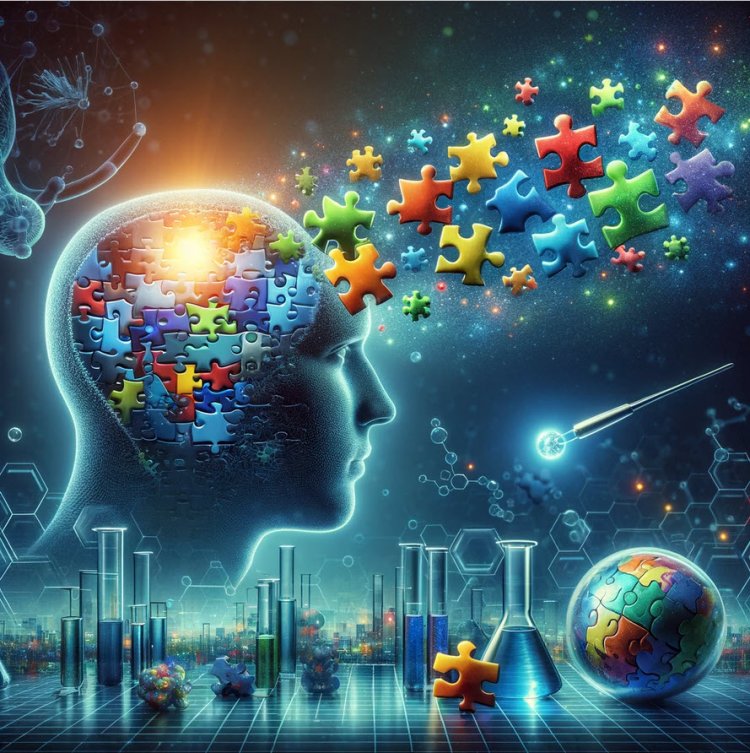Unlocking the Mysteries of Autism Through Nanoscience
Autism Spectrum Disorder (ASD) is a complex neurodevelopmental condition that affects millions of people worldwide. Characterized by challenges in communication, social interaction, and repetitive behaviors, autism has long been a subject of scientific inquiry and research. In recent years, the intersection of autism and nanoscience has opened up exciting new possibilities for understanding and potentially treating this enigmatic disorder. In this blog, we will explore how nanoscience is shedding light on autism and the potential breakthroughs it may offer.

Chapter 1: The Complexity of Autism
Autism is a multifaceted condition with a wide range of symptoms and severity levels. It has a strong genetic component, but its exact cause remains elusive. Researchers have been working tirelessly to unravel the complexities of autism, and one promising avenue is the application of nanoscience.
Chapter 2: Nanotechnology and Its Role
Nanoscience is the study of materials and phenomena at the nanometer scale, which is one billionth of a meter. At this scale, matter behaves differently, and unique properties emerge. Nanotechnology allows scientists to manipulate and engineer materials on this tiny scale, offering numerous applications in medicine, electronics, and more.
Chapter 3: Understanding Brain Structure and Function
To comprehend autism, scientists need to delve into the intricacies of the brain. Nanoscience tools like functional magnetic resonance imaging (fMRI) and advanced microscopy enable researchers to investigate brain structure and function at a level of detail never before possible. This can help pinpoint specific regions or neural circuits associated with autism.
Chapter 4: Nanoscale Biomarkers and Diagnosis
Early diagnosis of autism is crucial for early intervention and improved outcomes. Nanoscience has paved the way for the development of nanoscale biomarkers that can be detected in blood or cerebrospinal fluid. These biomarkers may enable more accurate and earlier diagnosis of autism, potentially changing the landscape of autism screening.
Chapter 5: Drug Delivery and Treatment
Nanotechnology offers innovative drug delivery systems that can target specific areas of the brain or body with remarkable precision. For individuals with autism, this means the possibility of tailored treatments that can mitigate symptoms and improve quality of life. Nanoscale drug delivery carriers can traverse the blood-brain barrier, a challenge that traditional medications often face.
Chapter 6: Therapeutic Nanoparticles and Gene Editing
In addition to drug delivery, nanoscience is exploring therapeutic nanoparticles that can modulate neural activity or repair damaged neural pathways. Emerging technologies like CRISPR-Cas9 gene editing are being investigated for their potential to correct genetic mutations associated with autism.
Chapter 7: Ethical Considerations
The ethical implications of nanoscience in autism research are significant. Issues surrounding privacy, consent, and potential unintended consequences of manipulating the human brain at the nanoscale must be carefully considered and addressed by the scientific community and society as a whole.
Conclusion
Nanoscience is revolutionizing our understanding of autism and holds promise for novel diagnostic and therapeutic approaches. While there is still much work to be done, the collaboration between autism researchers and nanoscientists is an exciting frontier that offers hope for improved outcomes and a deeper understanding of this complex condition.
As we continue to explore the intersection of autism and nanoscience, it is crucial to prioritize ethical considerations and ensure that the benefits of this research are accessible and equitable to all individuals affected by autism. The journey to unlock the mysteries of autism is ongoing, and nanoscience is a powerful tool that is helping us get closer to that goal.
What's Your Reaction?
















